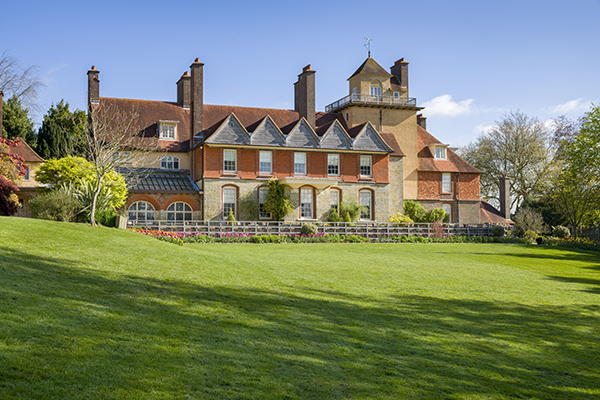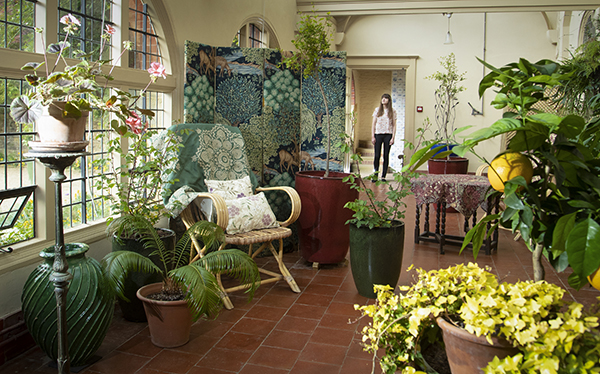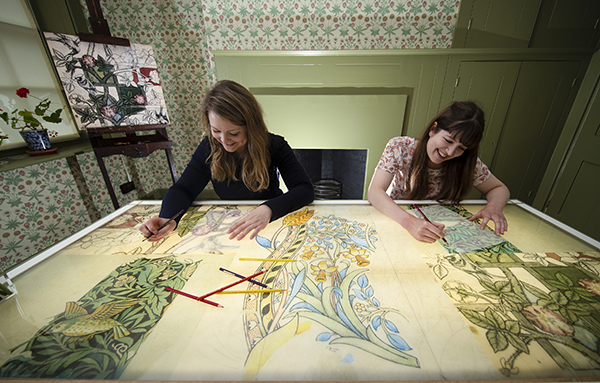An historic Arts & Crafts house explores how the natural world inspired designer William Morris
Hidden at the end of a quiet Sussex lane, Standen House and Garden is a monument to the combined genius of architect Philip Webb and his friend, William Morris. Standen was built as a holiday and retirement home by the Beale family, who were prominent in Birmingham manufacturing in the late 19th century. The Beale family hired Philip Webb to design their new home and furnished the interiors with work created by William Morris.

The South Front and garden at Standen ©National Trust Images/Andrew Butler
William Morris (1834-1896), founding father of the Arts & Crafts Movement in Britain, designed some of the most recognizable textile patterns of the nineteenth century. The creative force behind Morris & Co., which produced his designs, Morris had a love of nature which influenced his work. His designs for fabrics, wallpapers, tapestries and embroideries show how much he celebrated nature in his work. He said of his work, “I must have unmistakable suggestions of gardens and fields, and strange trees, boughs and tendrils, or I can’t do with your pattern.”
“I must have unmistakable suggestions of gardens and fields, and strange trees, boughs and tendrils, or I can’t do with your pattern.”
This summer visitors to Standen can learn about the inspiration behind William Morris’s iconic designs in an exhibit, “Morris & Co. Inspired by Nature.” Running from June 1 through November 10, the exhibit will explore how patterns of flowers and birds in Morris & Co. designs were chosen, and the value that Morris placed on the revival of traditional skills and techniques including natural dyeing and tapestry weaving.

The Conservatory ©National Trust/Rod Kirkpatrick
In collaboration with Morris & Co., which still produces his designs today, the exhibition will include a recreation of the company’s original showroom so that visitors can experience how customers like the Beale family selected products for their homes.
Wallpaper blocks for Larkspur from Morris & Co.’s archive, the original drawing for Daffodil from the William Morris Gallery, and Fox and Hare, two drawings by Standen’s architect Philip Webb from the National Trust’s Wightwick Manor, are among the items on display.

Using the interactive table in the Living Artists Studio ©National Trust/Rod Kirkpatrick
According to National Trust Standen curator, Alice Strickland, “Morris possessed an understanding and deep love of all natural things: flowers, trees, birds, animals and insects. In his designs he often chose to use field and hedgerow plants such as dog rose and honeysuckle, and the curving branches of oak and willow. His patterns are a reminder of the joys of the British countryside. Blackbirds feast on wild strawberries in the pattern Strawberry Thief and wild roses clamber through a trellis in Trellis.”
“His patterns are a reminder of the joys of the British countryside. Blackbirds feast on wild strawberries in the pattern Strawberry Thief and wild roses clamber through a trellis in Trellis.”
The exhibit will extend from the house across the garden and wider estate. A program of events will include talks, craft workshops and family events, and the chance to see plants such as pomegranate, rose and honeysuckle in the conservatory and garden, reflecting those in Morris and Co.’s patterns.
A trail inspired by William Morris’s poem Tapestry Trees will lead visitors through the Arts & Crafts garden overlooking the Sussex Weald, showing why each of the trees including oak, ash and yew was important to Morris.
About the Exhibit
Inspired by Nature runs from June 1 through November 10 at Standen House and Gardens in West Sussex. For opening times and more, visit Inspired by Nature exhibit at Standen.



